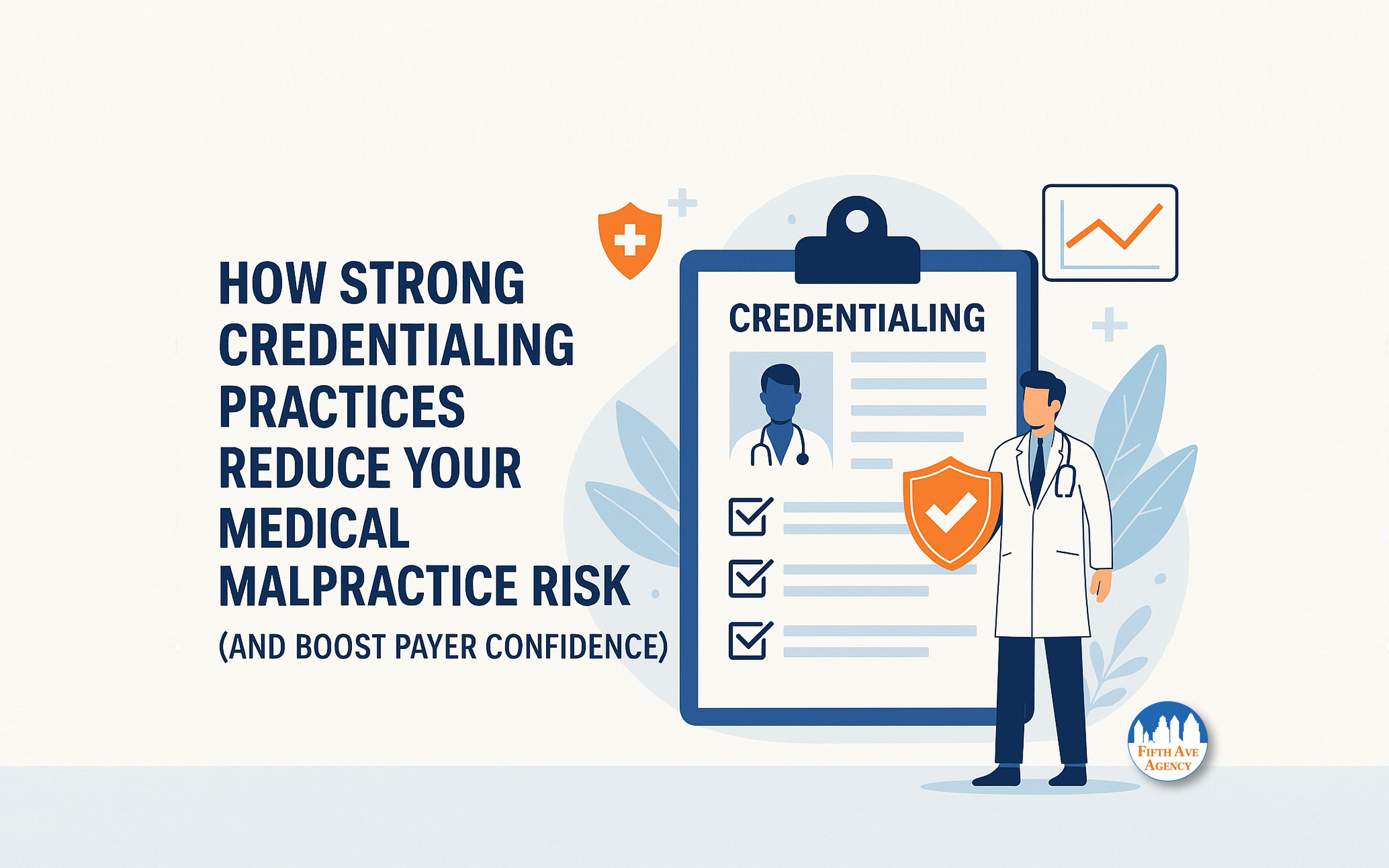In healthcare, where the paramount concern is the well-being of patients, there exists a vital yet often overlooked process known as provider enrollment. Provider enrollment, synonymous with payer enrollment, is the cornerstone that enables healthcare providers to forge contractual relationships with health plans, networks, Medicare, and Medicaid. Through this intricate process, providers secure the ability to receive rightful compensation for the medical services they render.
In this comprehensive exploration, we will delve deeply into the world of provider enrollment (or payor enrollment), dissecting its multifaceted components and emphasizing the pivotal role of working with experts in the field. Furthermore, we will spotlight the groundbreaking entity Primoris, which has redefined provider enrollment by offering a streamlined approach, revolutionizing how healthcare providers navigate this complex landscape.
The Essence of Provider Enrollment (or Payor Enrollment)
Provider enrollment (or payor enrollment), while not always at the forefront of healthcare discussions, is a process of immense significance. It is the mechanism by which healthcare providers establish contracts with various entities, including health plans, networks, Medicare, and Medicaid.
This critical step ensures that providers can offer their services and guarantees that they receive timely and rightful compensation for their efforts. The complexity of provider enrollment cannot be overstated. It entails a web of intricate procedures and regulations, dynamic interaction between providers and payers, and many variables that come into play.
To truly appreciate the power and significance of provider enrollment, one must embark on a journey through its intricate terrain.
The Power of Provider Enrollment Experts
At the core of the provider enrollment process lies a labyrinth of complexities that can be daunting for even the most seasoned healthcare professionals. This is where the expertise of provider enrollment specialists becomes indispensable. Working with experts in the field is not merely advantageous; it is often necessary for providers seeking to streamline their operations and ensure that patients receive the best possible medical care.
The need for provider enrollment experts is driven by a multitude of factors. Firstly, policies and regulations governing provider enrollment can vary significantly from one state to another.
For instance, the State of Oklahoma’s OHCA Policies and Rules document spans fifty chapters, housing crucial information on provider credentialing. Similar documents with their idiosyncrasies can be found in each state, plan, and network, painting a picture of the complex landscape of provider enrollment.
Three Stages of Provider Enrollment (or Payor Enrollment)
Provider enrollment is a multifaceted process that can be divided into three distinct yet interconnected phases, each brimming with complexities and nuances.
There are three stages to the provider enrollment process:
- Primary Source Verification of a Provider’s Credentials
- Payor Application Process
- Contracting Process
Below is an overview of each of these steps.
Stage 1: Primary Source Verification
Primary Source Verification (PSV) is necessary for every healthcare provider seeking to be enrolled in any health plan or network option. Insurance companies do not want unverified providers on their plans, which would present a tremendous risk of financial costs in claims and litigation. Credentialing can identify providers considered unqualified to treat patients, potentially decreasing patient injuries, claims, lawsuits, and even deaths.
Conventional credentialing typically involves 52+ action steps that must occur before a file is ready for presentation. Credentialing alone is a lengthy step in the provider enrollment (or payor enrollment) process. Primoris collaborates with its sister company, 5ACVO, to shorten this step from 52 conventional credentialing steps to 6 simple steps.
Stage 2: Payor Enrollment Application
Each health plan, including Medicare, has its application process. Like enrollment policies, applications can vary based on state, health plan, network, and area of practice. Learning how to apply with any payor can be frustrating and time-consuming. Applying to multiple payors per provider can drain resources, time, and energy and increase costs that could be better spent on helping patients or running a provider’s practice.
Primoris can aid providers through this crucial stage by fully administering the application process and applying to 25+ delegated health plans and networks via ONE application. Another 25+ non-delegated health plan and network options allow providers to begin billing and see patients sooner than the traditional application process.
Delegated contracts allow Primoris to use ONE application to enroll a provider much faster than the traditional method of sending an application to each health plan.
Primoris has built relationships with these companies to maximize efficiency in the enrollment process to best assist providers in seeing patients as soon as possible. These arrangements can benefit providers no matter the contract type.
Primoris provides ONE point of contact for delegated and non-delegated enrollment to assist providers further. Providers and administrators need only maintain ONE email address and ONE phone number. Just contacting the right people can often be tricky. Attempting to reach multiple people can be a hassle. Primoris strives to keep it as simple as possible.
Stage 3: Contracting
After the primary source verification and plan application stages, the plan sends a contract to the provider to review and sign. The plan countersigns the agreement once the provider approves the terms and signs the contract. When contracting is complete, the plan completes the loading process and sets a date for the provider to begin accepting covered patients and billing.
The same general process is repeated for each payor, including Medicare and Medicaid. Having someone with experience aid the provider in the Medicare and Medicaid application process is helpful. Medicare enrollment can be elaborate and lengthy. Simple mistakes can be costly and delay enrollment and billing.
Revolutionizing Provider Enrollment
Enter Primoris, a trailblazing entity reshaping the provider enrollment landscape. Primoris offers healthcare providers a remarkable advantage through its innovative approach to both delegated and non-delegated provider enrollment.
Delegated Provider Enrollment
Primoris stands out as a delegated provider by most major plans in Oklahoma and is expanding its reach into Illinois, Texas, and Missouri. Achieving this status entails surpassing stringent policy and quality requirements, subjecting themselves to annual audits, and consistently demonstrating excellence. Delegated provider enrollment brings unparalleled efficiency and control to the credentialing process.
Benefits of Delegated Provider Enrollment with Primoris include:
- Single Application Enrollment (SAE): A single application with access to numerous plans and network options, streamlining enrollment.
- Single Point of Contact (SPC): A dedicated team of provider enrollment and credentialing experts with a collective experience of 385+ years, ensuring personalized support.
- Single Data Source (SDS): A centralized repository for all credentialing documents, allowing easy access and monitoring through a single sign-on provider credentialing portal.
Non-Delegated Provider Enrollment
Primoris also offers non-delegated provider enrollment services, leveraging their extensive relationships with carriers, networks, Medicare, and Medicaid. Their in-depth knowledge, established contacts, and adherence to best practices enhance the efficiency of the credentialing process.
Benefits of Non-Delegated Provider Enrollment with Primoris include:
- Single Point of Contact (SPC): A dedicated team of provider enrollment and credentialing experts with a collective experience of 385+ years, providing expertise and support.
- Single Data Source (SDS): A centralized repository for all credentialing documents, simplifying access and monitoring through a single sign-on provider credentialing portal.
Streamlining Provider Enrollment for Efficiency
Primoris takes the complexity out of the enrollment process, significantly reducing the time required for healthcare providers to enroll with the health plans and network options that align with their practice. This expeditious approach enables providers to initiate billing procedures promptly and start seeing patients sooner.
The Evolving Landscape of Healthcare Provider Enrollment
As we delve deeper into the world of provider enrollment (or payor enrollment), it becomes evident that this intricate process is not static. Instead, it is constantly evolving, influenced by an array of factors ranging from technological advancements to changes in healthcare policy and regulations. To truly appreciate the significance of provider enrollment in today’s healthcare landscape, it’s imperative to understand the various dynamics at play.
Technological Advancements in Provider Enrollment
The digital age has ushered in a wave of technological advancements that have left virtually no industry untouched, and healthcare is no exception. Provider enrollment, traditionally a paper-intensive and time-consuming process, is undergoing a digital transformation.

Electronic provider enrollment applications and online portals have streamlined the submission and tracking of credentialing documents. These digital platforms reduce the administrative burden on providers and expedite the review and approval process.
Moreover, artificial intelligence (AI) and machine learning are increasingly being integrated into provider enrollment systems to automate certain aspects, such as data verification and compliance checks, further enhancing efficiency.
Telehealth, a prominent feature of modern healthcare delivery, has also influenced provider enrollment. As telemedicine providers expand their reach across state lines, they must navigate the complexities of enrolling with multiple state Medicaid programs and complying with varying regulations.
Provider enrollment experts, like those at Primoris, play a crucial role in ensuring that telehealth providers can efficiently navigate these challenges and expand their services to a broader patient base.
Policy and Regulatory Changes in Healthcare
The healthcare landscape is subject to constant policy and regulatory changes at both the federal and state levels. These changes can profoundly impact provider enrollment (or payor enrollment) processes and requirements.
For instance, implementing the Affordable Care Act (ACA) introduced new regulations and standards for health plans and providers. Provider enrollment had to adapt to ensure compliance with ACA provisions, such as network adequacy requirements and standardized provider directories.
Additionally, changes in reimbursement models, such as the shift from fee-for-service to value-based care, have prompted adjustments in provider enrollment. Health plans and networks are now looking for providers who can demonstrate a commitment to quality and outcomes, further emphasizing the importance of thorough credentialing and enrollment.
State-specific policies also play a significant role in provider enrollment (or payor enrollment). States may have unique requirements, such as specific training or certification, that providers must meet to participate in Medicaid programs. Navigating these state-specific nuances is where the expertise of provider enrollment specialists becomes invaluable.
The Impact of the COVID-19 Pandemic
The COVID-19 pandemic has brought unprecedented challenges and changes to the healthcare industry. Provider enrollment has not been immune to these impacts. As healthcare systems grappled with surges in patient volumes and the need for rapid deployment of healthcare workers, provider enrollment processes had to adapt to meet the situation’s urgency.
Emergency licensure and expedited credentialing procedures were implemented to facilitate the deployment of healthcare professionals to areas with high caseloads. Telehealth saw a surge in demand, prompting temporary changes in licensing requirements and the relaxation of specific enrollment criteria to accommodate remote care delivery.
While many of these changes were necessitated by the crisis, they have opened discussions about the need for greater flexibility and agility in provider enrollment processes. Healthcare systems are now exploring ways to maintain some of these adaptations to better respond to future emergencies or evolving healthcare needs.
The Role of Data in Provider Enrollment
In an era defined by data-driven decision-making, the role of data in provider enrollment cannot be overstated. Healthcare organizations are increasingly leveraging data analytics to inform their enrollment decisions.
Data analytics can be used to assess provider performance, track outcomes, and identify trends in healthcare utilization. This data-driven approach aids health plans and networks in selecting providers who align with their goals of delivering high-quality, cost-effective care.
Furthermore, data analytics can help identify potential risks in provider enrollment. Patterns of overutilization, fraud, or non-compliance with regulations can be detected through data analysis, allowing for timely intervention and corrective actions.
The Future of Provider Enrollment: Innovations and Challenges
As we gaze into the future of provider enrollment, it becomes evident that this critical process will continue to evolve in response to emerging trends and challenges.
Here are seven factors that will shape the future of provider enrollment:
- Telehealth Expansion: The expansion of telehealth services will likely persist, driven by consumer demand for convenient healthcare access. Provider enrollment must adapt to accommodate the growing number of telehealth providers operating across state lines.
- Value-Based Care: The shift towards value-based care models will place a greater emphasis on the quality and outcomes of healthcare delivery. Provider enrollment will need to incorporate more robust measures for assessing provider performance.
- Data Integration: The integration of data from various sources, including electronic health records and claims data, will enable more comprehensive provider credentialing and enrollment processes. This will enhance the ability to assess provider qualifications and compliance with evolving healthcare standards.
- Regulatory Changes: The healthcare industry will continue to experience regulatory changes, necessitating ongoing adaptation in provider enrollment processes. Staying abreast of these changes and ensuring compliance will remain paramount.
- Patient-Centered Care: A focus on patient-centered care will drive the selection of providers who prioritize patient satisfaction and engagement. Provider enrollment will consider patient feedback and experience in the credentialing process.
- Artificial Intelligence: AI and machine learning will play an increasingly prominent role in automating aspects of provider enrollment, such as verification and compliance checks. This will expedite the enrollment process and reduce administrative burdens.
- Pandemic Preparedness: The lessons learned from the COVID-19 pandemic will inform future preparedness measures, including more agile and flexible provider enrollment procedures to respond to emergencies.
Primoris: Pioneering the Future of Provider Enrollment
In the ever-evolving landscape of healthcare provider enrollment, entities like Primoris are at the forefront of innovation. By embracing technological advancements, staying abreast of policy and regulatory changes, and leveraging data-driven insights, Primoris continues to redefine and streamline the provider enrollment process.
As the demand for telehealth services grows, Primoris is equipped to assist providers in navigating the complexities of enrolling with multiple state Medicaid programs and complying with evolving regulations. Their expertise extends to addressing the unique challenges posed by the expansion of telehealth.
Moreover, Primoris recognizes the critical role of data in provider enrollment. Through data analytics and integration, they empower health plans and networks to make informed decisions when selecting providers who align with their goals of delivering high-quality, cost-effective care.
Conclusion: The Imperative of Provider Enrollment in Modern Healthcare
Provider enrollment (or payor enrollment) is an indispensable pillar of modern healthcare. It ensures that healthcare providers can deliver their services effectively and receive rightful compensation in an ever-evolving landscape.
The complexities inherent in provider enrollment (or payor enrollment) underscore the need for expert guidance to navigate the intricate web of regulations, policies, and technological advancements.
Primoris’ innovative approach to provider enrollment (or payor enrollment) exemplifies the future of streamlined, efficient credentialing and enrollment. As the healthcare industry continues to evolve, so too will provider enrollment, adapting to meet the challenges and opportunities that lie ahead. In this dynamic environment, providers who partner with experts like Primoris will find themselves well-positioned to thrive and deliver exceptional patient care.
More About Primoris Credentialing Network
Primoris Credentialing Network is an NCQA Credentialing Accredited organization specializing in credentialing and provider enrollment (or payor enrollment). With access to 54+ health plans and network provider enrollment options, Primoris is transforming the provider enrollment landscape.
As a part of the Fifth Avenue Healthcare Services family, which includes sister companies like 5ACVO (credentialing and primary source verification specialists) and Fifth Avenue Agency (MPLI and medical malpractice specialists), Primoris is committed to revolutionizing provider enrollment (or payor enrollment) for the benefit of healthcare providers and patients alike.
Provider enrollment, often operating behind the scenes of healthcare delivery, is an intricate and indispensable process that ensures healthcare providers can deliver their services effectively and receive rightful compensation. The complexities inherent in this process necessitate the involvement of provider enrollment experts who can guide healthcare providers through the maze of regulations and requirements.
Primoris, with its innovative approach to delegated and non-delegated provider enrollment, offers a streamlined path for healthcare providers, reducing the time and effort required to enroll with various health plans and network options.
By simplifying the provider enrollment (or payor enrollment) process, Primoris empowers healthcare providers to focus on what matters most: delivering high-quality care to their patients. In the ever-evolving world of healthcare, Primoris is a beacon of efficiency, transforming provider enrollment for the betterment of the entire healthcare ecosystem.
Primoris Credentialing Network initially published this article here. For more information on Primoris Credentialing Network, please visit PrimorisCredentialingNetwork.com or Contact Us.

















